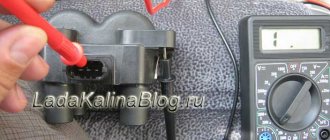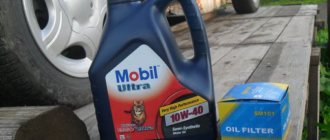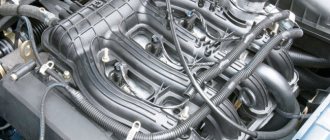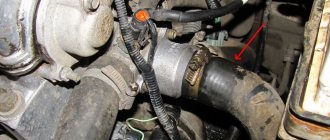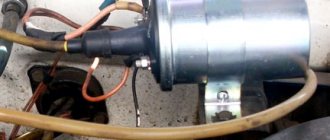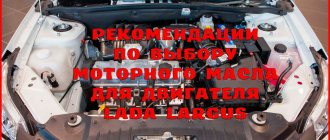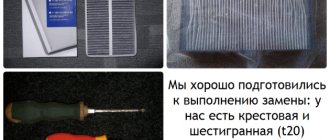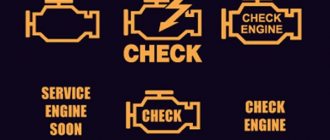The engine stalls when hot: reasons
To determine the main reasons, you need to know the design features of the power unit. Thus, not all motorists are able to identify the cause and also repair the breakdown on their own. Therefore, if the owner of the power plant doubts his abilities, it is recommended to contact the car service directly.
You may be interested in: How to replace the Chevrolet Lacetti cabin filter yourself
Is the engine running hot? Let's determine the main causes and nodes of the problem:
- Problems in the ignition system. This includes spark plugs, high-voltage wires, as well as the ignition coil and switch.
- Formation of an air-fuel mixture. In this category, the cause will be the fuel and air filter, carburetor or injector.
- Wear of the engine, namely components such as piston rings, valves or valve stem seals.
- The presence of air leaks for one reason or another.
- Malfunctions associated with broken sensors or errors in the motor control unit.
Causes of diesel engine trouble
If the engine shakes during operation, and the shaking is accompanied by a characteristic “boo-boo-boo” sound, it means the engine is troublesome. These signs are typical for any power units, regardless of the type of fuel used and the presence of supercharging. Determining why a diesel engine stalls is somewhat easier than a gasoline injection engine, although this is not an ordinary task.
A diesel engine differs from a gasoline engine in the way it ignites the working mixture. If a gasoline injection engine ignites the working mixture with an electric spark that occurs between the electrodes of the spark plug, then ignition of diesel fuel occurs from compression, namely due to an increase in the temperature of the compressed air-fuel mixture. The main reasons causing this problem are lack of fuel in the cylinder or lack of compression.
If the engine is misfiring due to one cylinder, it is not difficult to determine what caused the problem. It is much more difficult to figure it out if, at first glance, all the cylinders are working, but the engine is still running rough.
To determine why a gasoline injection engine stalls, it is necessary to take into account under what conditions the problem intensifies and under what conditions it disappears, namely:
- cold or hot;
- at idle or on gas;
- with or without load.
In this regard, a diesel engine is no different from a gasoline engine: in order to find out exactly why it misfires, it is also necessary to take into account all significant factors.
Why can't fuel ignite?
Insufficient compression in the cylinder
As natural wear occurs, the gaps between the parts of the cylinder-piston group increase. They are the cause of the pressure drop in the combustion chamber. You can accurately determine the drop in compression using a special pressure gauge. Indirectly, the fact that the compression ratio is insufficient is evidenced by more pronounced tripping when cold and at idle. When hot and on gas, the diesel engine revs less or stops revving altogether.
Since the cylinders wear unevenly, the degree of compression, and therefore the temperature of the compressed mixture, will be different everywhere. As the engine heats up, the temperature of all cylinders increases. Despite the fact that it still remains different in each of them, the fuel ignites reliably and the engine stops stalling.
There are known cases when a diesel engine began to misfire after replacing the cylinder head gasket. The fact is that the cylinder-piston group was badly worn, and the new gasket was slightly thicker than the old one. After the replacement, the compression ratio decreased and the air-fuel mixture began to ignite intermittently.
Faulty glow plug
Glow plugs in a diesel engine perform two tasks. The first is heating the combustion chamber to facilitate ignition of diesel fuel and maintaining a high temperature until the engine warms up. The second task is to improve fuel atomization. A jet of diesel fuel injected through the injector hits the glow plug and is atomized, thanks to which the fuel mixes better with air and burns better.
Thus, if the spark plug fails, the temperature in the cylinder at startup will be insufficient to ignite the mixture, and the cylinder will not work. A similar picture is observed when the voltage of the second glow stage, intended to maintain the temperature in the cylinder, is not supplied to the spark plug. If the heated rod of the spark plug burns out, the jet of diesel fuel that the injector injects will not be sprayed. As a result, mixture formation deteriorates and the engine stalls.
If a diesel engine stalls when cold and at startup, but does not stall after warming up even on gas, the reasons for this may lie in the fact that it is time to replace the glow plugs. You may also experience smoky exhaust due to incompletely burned fuel.
Why there is a lack of fuel in the cylinders
Faulty injectors
If the injection pump pumps insufficient pressure into the fuel system, the injector injects fuel into the cylinders insufficiently intensively, as a result it is poorly atomized and burns worse. It may be that the pump does its job well, but the injectors spray diesel fuel differently. Because of this reason, the fuel is distributed unevenly between the cylinders, and the engine begins to shake during operation, and sometimes even shakes.
If the injector is to blame, it needs to be replaced, but a new problem may arise: the fuel injection pump, due to wear or due to incorrect adjustment, produces pressure that is insufficient to push the required amount of fuel through the new injectors, and the engine begins to operate with the sound of detonation, harshly. This is disastrous for him. Thus, in case of replacing injectors, you need to check how well the high-pressure pump works and, if necessary, adjust, repair or replace it.
Injection advance
It is clear that the longer the working mixture remains in the combustion chamber, the better it will heat up, and the more likely it will be to burn completely, even if there is insufficient atomization. The problem is that injection too early leads to accelerated wear of the power unit, although at the same time power increases and smoke decreases.
Many automakers equip fuel injection pumps with warming devices. These devices increase engine speed when cold and make injection earlier. After warming up, the crankshaft speed drops to normal, and the advance decreases to the standard value for a specific power unit at specific speeds.
On gas, in order for the fuel to burn completely, it is necessary to increase the injection timing. The advance is adjusted by the diesel fuel pressure in the fuel injection pump housing. As the high-pressure pump wears out, the injection timing no longer corresponds to the crankshaft speed, resulting in the engine stalling. The reasons for incorrect injection timing lie in the wear of the injection pump itself, wear of its drive (for example, due to an elongated belt), and the culprit may also be a pressure reducing valve or a clogged fuel filter in the drain pipe.
Depending on the reason, injection timing is disrupted either in a certain speed range (for example, at idle), or in all engine operating modes. There are often cases when the engine runs smoothly at idle speed, but as soon as you increase it to 1500-2000, it speeds up, while the same picture is observed both cold and hot.
Typically, a diesel engine stalls due to insufficient injection advance. It can be adjusted manually by turning the injection pump. This procedure is similar to turning the distributor on a gasoline engine to change the ignition timing.
As the injection advance increases, the engine still stalls when cold, but when hot the problem disappears. As was said above, it is impossible to increase the injection advance indefinitely, since this is detrimental to a diesel engine, so it is better to turn the fuel injection pump so that the engine shakes a little when cold, then when hot it will work completely smoothly both at idle and on gas.
znanieavto.ru
Troubleshooting methods
You may be interested in: Changing the oil in a Renault Logan engine: instructions and features
It is worth understanding that for normal operation of an engine, three main elements are required: fuel, air and spark. It is necessary to look for reasons primarily in these constituent elements. Also, as practice shows, a frequent cause is the failure of one of the measuring elements. Let's begin a step-by-step analysis of diagnostics and elimination methods when there is engine tripping.
Stalls when hot, doesn't save anything
You have reached the forum of Daewoo Matiz and Ravon R2 Club members.
You must be a user to leave a comment Register for an account.
There are no users viewing this page
Help! The engine stalls at idle! (nexia)
I was driving from the village, and after 30 km the engine stopped.
Twisted it in neutral. Works with gas.
Without gas it stalls. Somehow I got there. I took it to a garage service. The idle speed sensor was replaced. Everything worked: without gas it does not stall at idle at just under 1000 rpm.
At the same time I changed the engine cover gasket, ventilation hose and fuel filter. I left the service station, drove up to the house - again the same nonsense - the car stalls at idle.
8-class car, mileage 170 thousand km.
- Posts: 80
- From: Tyumen
- Chevrolet Orlando LTZ
What kind of car is that? Each car has its own show off!
- Posts: 1537
- From: Lipetsk
- Hyundai Elantra gls 1.6Nissan Bluebird 1.8 SLX-G
Spark plugs and armored wires
The first fundamental reason is the lack of spark in one of the cylinders. In this case, the candle stops working after heating. Many car enthusiasts do not know how to check spark plugs for performance at home.
You may be interested in: Buy a Subaru Forester III with mileage for 800 thousand
This is done quite simply:
- Unscrew the spark plug from the cylinder.
- We put an armored wire on it.
- Connect the ground. You can attach it to the body, or you can attach a separate wire.
- Turn on the ignition for a few seconds.
- If the spark plug works, a spark will appear.
If the spark does not appear the first time, then it is worth trying a second time. If it is completely absent, you should take another high-voltage wire. If there is still no spark, then the problem is in the spark plug itself, and it needs to be replaced with a new one.
For spark plugs, it is always recommended to select according to the vehicle. This will help you not make a mistake when choosing a part. It is recommended to check the gaps between the contacts after purchase. Each engine will have its own, so it is worth studying the technical literature.
Armored wires also need to be checked for functionality. It is worth understanding that most elements have a resistance, which should be approximately 5 ohms. If the permissible value is less, then the wire is damaged and the part must be replaced.
Daewoo Nexia stalls at idle when the engine is hot
Why can't a person find the videos he needs on Youtube?
The whole point is that a person cannot come up with something new and look for it.
He has run out of imagination. He has already watched a lot of different channels, and he no longer wants to watch anything (from what he watched previously), but what to do in this situation? To find a Youtube video that suits your needs, you need to keep searching. The more difficult the search, the better the result of your search will be.
Remember that you only need to find a few channels (interesting ones) and you can watch them for a whole week or even a month.
Therefore, if you lack imagination and do not want to search, you can ask your friends and acquaintances what they watch on Youtube. Perhaps they will recommend original video bloggers that they like. You might also like them and become their subscriber!
Online mp3 cutting is a convenient and simple service that will help you create your own musical ringtone. YouTube video converter Our online video converter allows you to download videos from the YouTube website into webm, mp4, 3gpp, flv, mp3 formats.
These are radio stations to choose from by country, style and quality.
Radio stations from all over the world, more than 1000 popular radio stations. Online broadcast from Web cameras is absolutely free in real time - broadcast online.
Air leak
The presence of excess air in the cylinders can cause tripping. Thus, excess oxygen can enter the power unit in several ways: through a broken head gasket, or be “sucked in” through the intake manifold gasket or injector.
The most common cause is a breakdown of the cylinder head gasket. To eliminate the problem, it is necessary to replace the gasket material. To do this you will have to dismantle the block head. This will allow access to the cylinders and valves, which also need to be diagnosed.
What to do?
If you have the appropriate experience and have decided to independently eliminate the cause of the engine tripping, you first need to identify the source of the problem. Often the culprit of the malfunction in question is a defect or malfunction in the operation of the injectors. A critically worn nozzle, low pressure inside the injection elements, dirty channels, poor quality fuel - these are the main factors affecting the functionality of the injectors (see the article “How to check an injector nozzle”).
To fix the problem, you can clean the sprayer or replace it. It is recommended to update injectors on diesel power units every 120-150 thousand kilometers. A defective injector can be identified experimentally by moving it to another cylinder. If it also acts up, a malfunction has been detected.
If there is a cause of tripping caused by a faulty fuel injection pump, it may require repair or complete replacement. You can check this in practice using the same method as with the nozzle. If, after replacing the latter with a new part, the cylinder shows no signs of life, then the cause of the malfunction most likely lies in the high-pressure fuel pump.
A diesel engine may malfunction due to a malfunction of the valve mechanism of the problem cylinder. Typically this problem is accompanied by valve knocking. First of all, it is necessary to check the gaps between the elements and, if necessary, adjust them. Violation of the distances between the valves contributes to the fact that the diesel engine only stalls when the engine is hot. With such a malfunction, sufficient compression will not be created in the engine.
Spark plugs with soot affect the appearance of the problem in question, most often in cold weather when the engine is not warmed up. They should be replaced in a timely manner. The faults discussed are the main reasons why a diesel engine stalls. For timely treatment of the “heart” of the car, it is necessary to take immediate action by contacting a service station or on your own, if you have experience and confidence in a positive result.
When a diesel engine fails, the reasons should be looked for in several places, and this is what our review will be about. In general, we should mention what troit is. This means that one of the engine cylinders has stopped working, that is, fuel does not flow to it, and the “heart” of the car operates unevenly, it shakes convulsively. After a short preamble, we will begin to find out the reasons.
Piston rings and valves
Wear of piston rings is one of the reasons for engine tripping. Many auto repairmen recommend performing the so-called “throwing” process, but this does not always help. Usually, when the rings are heavily worn, oil begins to enter the cylinder, which leads to contamination of the spark plug. It is because of this that the engine stalls when hot. In this case, it is necessary to carry out a major overhaul of the engine, bore the block and install the repair size of the rings and pistons.
The second reason is valves. If there is severe wear or burnout, a gap is formed through which excess gasoline flows. The air-fuel mixture becomes “rich”, which leads to “choking” of the engine. This effect is most visible when the engine starts up when you press the gas pedal. In this case, the most correct solution is a major overhaul of the cylinder head with replacement of guide bushings, valves and seats.
Why does a diesel engine stall: possible reasons
A noticeable increase in vibrations or shaking, unstable operation of the internal combustion engine in various modes and the appearance of blue-black exhaust from a diesel engine may indicate that the diesel engine is oxidizing. The driver feels a strong vibration on the steering wheel, the engine reacts sluggishly to the gas pedal, does not develop power, and consumes a lot of fuel. This means that one or more cylinders are completely inactive. The second option is to operate the internal combustion engine intermittently.
Read in this article
Reasons for tripping of diesel internal combustion engines
It is somewhat easier to answer the question of why a diesel engine is tripping, to determine the causes and to localize the fault compared to gasoline units.
A diesel engine often “troubles” for two main reasons: lack of proper compression of the mixture or problems with fuel supply. It is more difficult to determine the cause if all cylinders are working, but the diesel engine still vibrates and operates erratically. The cause may also be air leaks, problems with sensors, ECU, etc. It is often difficult to quickly find such a malfunction.
The main difference in the operation of a diesel engine is the method of ignition of the fuel-air mixture. Diesel fuel is ignited in the cylinder due to compression. In other words, diesel fuel spontaneously ignites. Additionally, it is necessary to take into account the moment when the “triple motion” of a diesel engine increases. A diesel engine can bleed cold, hot, idling and/or under load. The problem may appear only in a specific narrow speed range, occur periodically, or be present constantly.
Diesel fuel does not ignite: compression is lost
The cylinder-piston group of any internal combustion engine experiences increased loads. During operation, the gaps between the parts of the CPG increase as the elements wear out. The valves of the gas distribution mechanism are also subject to wear.
The loss of the ability to ensure tightness when one of these parts is destroyed leads to the fact that proper heating of the mixture is not ensured during the compression stroke. Diesel fuel simply cannot ignite.
If the compression ratio is insufficient (loss of compression), the diesel engine throttles strongly after a cold start. As a result of heating, the CPG parts expand and the seal in the cylinder increases. A heated diesel engine shakes noticeably less, and the tripping effect may disappear completely. This phenomenon is observed only if there is no critical wear of the CPG or valve mechanism elements.
It turns out that the wear of the cylinder-piston group with engine heating is partially compensated due to the fact that the diesel fuel in the cylinders self-ignites due to an increase in the temperature of the internal combustion engine. There is a situation where a diesel engine misfires after replacing the cylinder head gasket with a new one. In this case, the working unit with a worn-out CPG throttles strongly “on cold” and adjusts “on hot”.
This malfunction is explained by the fact that the new gasket is thicker than the old one. The result is a lower compression ratio, further exacerbating existing compression problems. A thicker gasket affects the efficiency of self-ignition of the working mixture of diesel fuel and air in such an engine.
Diesel misfires due to glow plugs
Glow plugs play an important role in a diesel engine. For a confident start “on cold”, the glow plugs heat the combustion chamber. This is necessary so that self-ignition of the mixture of air and diesel fuel occurs easily during startup. Next, the glow plug continues to maintain the set temperature in the cylinder until the engine finally reaches operating temperature. After this, the candles automatically turn off.
Glow plugs are also indirectly involved in the process of diesel fuel atomization. At the moment of fuel injection, a jet of diesel fuel, which is supplied from a diesel injector under high pressure, hits the heated spark plug. This helps the fuel to be atomized more efficiently in the cylinder.
After contact with the candles, diesel fuel scatters into tiny particles, partially evaporates, and mixes better with the air. As a result, the resulting mixture burns as efficiently as possible, transferring energy to the piston. If the glow plug is faulty, the temperature in the cylinder during a cold start will be too low and the diesel fuel will not be able to self-ignite.
The cylinder will be inoperative, although it will receive fuel, which then enters the exhaust system of the diesel engine. In this case, the diesel engine often produces dark gray or black exhaust. As the temperature of the internal combustion engine increases, the fuel (taking into account normal compression) will begin to ignite, but intermittently. The problem will go away completely after warming up, but with a subsequent cold start the malfunction will recur.
Unstable operation of a diesel engine after partial warming up (provided that the diesel engine worked normally during a cold start) can be explained by the fact that no electric current is supplied to the glow plug in the mode of further maintaining the required temperature in the cylinder. The heating element of the candle (rod) will remain cold, diesel fuel will fall on it, but the quality of the atomization will noticeably decrease. Under such conditions, the mixture formation in the chamber is disrupted, the fuel does not burn completely, the diesel engine smokes and runs hot. In such cases, the glow plugs must be replaced immediately.
Diesel shakes and smokes: problems with fuel supply
If there are problems with the fuel supply, then the diesel engine starts to stall for the following reasons:
- the fuel pump does not create optimal pressure in the fuel supply system;
- the injection intensity is disrupted as a result of a malfunction of the diesel injector;
In both cases, fuel atomization deteriorates and the mixture does not burn completely. The fuel injection pump can create normal pressure, but the fuel injectors deliver different amounts of fuel to the cylinders. In such conditions, fuel is distributed unevenly among the cylinders, the engine shakes in different operating modes. If it is completely impossible to pump a portion of diesel fuel through the nozzle, the diesel engine begins to stall. Cleaning, repairing, or replacing injectors must be accompanied by adjustment of the injectors before installation on the engine.
At the same time, it is necessary to regulate the fuel injection pump. The pump may be worn out and/or incorrectly adjusted, resulting in insufficient pressure to deliver the required amount of diesel fuel through the rebuilt or replaced injectors. The diesel engine may start to run rough, with detonation. Replacing injectors is necessarily accompanied by checking the performance of the fuel injection pump.
If there are problems with both the fuel pump and the injectors, the parts must be adjusted, repaired or replaced immediately. Detonation on a diesel engine will quickly damage the engine.
Late fuel supply
The amount of time the fuel-air mixture remains in the cylinder before ignition will determine the degree of heating of the mixture. Heating affects the efficiency of fuel combustion, minimizing losses from poor-quality atomization. At the same time, the early injection moment (advance) causes wear of the diesel engine, while simultaneously increasing the power of the unit. For this reason, it is necessary to maintain a balance between the injection advance angle and the desired output from the engine.
Many fuel injection pumps are equipped with a solution that allows you to increase diesel speed during a cold start. It turns out that the injection of diesel fuel becomes early. After the internal combustion engine temperature rises, the idle speed is reduced to standard. The injection advance also reaches the optimal power/wear indicator in relation to a particular diesel engine design.
During engine operation under load, the injection advance should be late (increased). This is necessary for the most complete combustion of the mixture in the cylinders. Structurally, it may be possible to adjust the advance by changing the diesel fuel pressure when supplying diesel fuel to the injection pump. The regulator is installed on the pump, allowing you to change the fuel injection timing yourself.
If the fuel injection pump is worn out, then the fuel injection advance angle does not coincide with the crankshaft speed of the diesel engine. The result is engine tripping. Injection timing may also be disrupted due to wear of the fuel pump drive, failure of the pressure reducing valve, clogged return filter, etc.
Incorrectly adjusted injection timing can occur both at certain speeds and constantly, when operating a cold or warm diesel engine. In this case, the engine, which operates normally in idle mode, stalls when the gas pedal is pressed after increasing the crankshaft speed.
In some cases, increasing the injection timing without repairing injectors and fuel injection pumps allows you to achieve more stable engine operation when driving. The diesel engine still stalls when cold, but as the temperature rises it starts to run smoothly. You need to adjust the operation of the fuel injection pump so that it only adjusts when the engine is cold. After warming up, the diesel engine will operate stably both in idle mode and under load.
It is worth remembering that tripping and detonation cannot be fully compensated by constant manipulations with injection advance by adjusting and adjusting the fuel injection pump. This method can be considered a temporary measure. Long-term operation with obvious malfunctions has a noticeable effect on the service life of a diesel engine. For this reason, it is necessary to constantly monitor the condition of the diesel engine power system and promptly carry out maintenance and repair of high-precision diesel fuel equipment.
Carburetor faulty
Many car enthusiasts have wondered why the engine stalls at speed, especially in carburetor cars. This has to do with the fuel supply. If the carburetor is severely worn, fuel does not flow evenly into the cylinders, but, accordingly, either a lot or a little. In this case, after pressing the gas pedal to overtake or advance, fuel enters the intake manifold unevenly, the engine begins to “chop” and shoot into the exhaust.
To eliminate the malfunction, it is necessary to dismantle the carburetor and clean it with a bulkhead. To do this you will need a repair kit. Most motorists do not contact a car service center to carry out such an operation, but carry out the repairs themselves, since the procedure is quite simple. The only subtlety is the setting and adjustment of the injection element.
How to determine if the engine is stalling?
In order to determine why a diesel engine stalls during operation, you need to start from something. It is necessary to compare the sound of the engine at the moment and before. It is also worth paying attention to the speed stability - is there a loss in power during acceleration. For experienced car owners, these procedures should not present any difficulties.
Engine tripping can be determined when it reaches operating temperature, i.e. on a warm engine. To do this, you need to go to the exhaust pipe and evaluate the sound of the exhaust. If it contains clearly distinguishable muttering sounds, then this indicates the urgency of the problem. Moreover, this check must be performed on a warm engine, since when it is cold, the described sound can be produced by working mechanisms.
With the engine running, you need to listen to how the unit operates in idle mode. If the engine twitches or its operation is unstable, this may indicate problems with one of the cylinders. If there is not enough experience to determine the problem in question or there are doubts, then you should contact a service station. In any case, when the engine fails, this is a breakdown that cannot be delayed.
Problems in the injector
We will consider injector malfunctions associated with engine tripping using the Lada engine as an example. In this case, the most likely cause is the injectors. Clogging of one of the parts can lead to an imbalance in the air-fuel mixture. This effect is called a “lean” mixture, since there is not enough fuel for normal ignition. It is for this reason that the VAZ engine (injector) is tripping.
To fix the problem, you need to dismantle the car's injectors and carry out diagnostics using a special stand that will show which part has failed. You can do the diagnostic operation yourself. To do this, you will have to remove the fuel rail, but do not disconnect it from the power system. After turning on the fuel supply pump, you will see which of the injectors is spraying fuel incorrectly. Thus, having identified the faulty element, it is worth replacing it and eliminating the reason why the VAZ engine stalls when hot.
Causes of engine tripping
A diesel engine can stall for several reasons. One of them is low compression in the cylinder. The essence of the reason is this: the temperature inside the cylinder is insufficient to ignite the fuel. The problem may be trivial - the injector does not work and the fuel in the cylinder is not sprayed. Also, the reason may lie in the breakdown of the injection pump (high pressure fuel pump).
If one of the cylinders does not work and the engine continues to operate, then there is a high probability of serious damage to the unit. Since the cylinder has failed, problems may arise in the near future. After all, the engine is under heavy load. As a result, the main engine parts overheat and wear increases. However, you can get to the nearest service center where your car can be repaired.
If a problem is detected on a warm engine, you need to check whether the engine is running when it is cold. Any minor defect can have a big impact on engine performance. Moreover, this can only be assessed when it is cold. When the engine warms up, compression increases and its operation becomes stable.
Troubling when cold can occur due to improper operation of the spark plugs. When the engine warms up, the problem disappears. In this case, it is necessary to check the spark plugs. They may need to be replaced.
Don't forget about glow plugs. The first purpose of this element is to heat the combustion chamber so that diesel fuel ignites more easily, and maintain a high temperature until the engine warms up. The second function is to promote better fuel atomization.
If the glow plug fails, the cylinder will not warm up to a temperature sufficient to ignite the mixture. Accordingly, tripling will be observed since the cylinder is not working.
Air supply problems
Air supply is an integral element of the formation of the air-fuel mixture. So, due to the wrong amount of air, the engine runs hot. The main elements that affect this are the throttle valve and the air filter.
A dirty throttle body will not allow proper air flow. As a result, the throttle may get stuck in one position, and the engine will stop functioning normally. To correct the situation, it is necessary to remove the part from the engine, then clean the element and make sure that the valve is working. It is worth noting that cleaning can be carried out with special means, but carburetor cleaning liquid is also ideal.
Particular attention should be paid to the mesh of the mass air flow sensor. It regulates the position of the throttle valve. If dust has accumulated on it, then the recognition of the amount of air that goes into the engine is impaired. Accordingly, much more oxygen can enter the power plant than is required. This causes an imbalance in the mixture. Therefore, when cleaning the throttle valve, it is necessary to pay attention to the sensor grid and also clean it.
The air filter must be changed every 20,000 km. If this is not done, the engine begins to feel a lack of air, and in addition to tripping, a number of other malfunctions occur. The way out of the situation is to replace the element. This will help normalize the amount of air supplied to the cylinders and restore the balance of the air-fuel mixture.
Soot on candles
In a working engine, the central and side electrodes of the spark plugs should be dry and have a light brown color; a slight black coating is allowed. Black dry electrodes indicate that there is more fuel in the fuel mixture than necessary. This is an indication that there is a malfunction in the power system. In this case, it is necessary to clean the throttle valve and idle air control.
White color means the mixture is lean (not enough fuel). Reasons for this:
- low octane number;
- disruption in the mixture formation cycle;
- early ignition or air leaks.
It is necessary to clean the injector and change the gas station. To search for air leaks, it is necessary to inspect the throttle assembly, the intake manifold (body and attachment point to the cylinder head) and its pipes. The most accurate way to detect leaks is to use a smoke generator.
If a defect is found at the connection, the seal must be replaced. If cracks are found on a part, it must be replaced.
Spark plug.
A Daewoo Lanos spark plug with oily carbon deposits indicates oil getting into the combustion chamber (wear of the piston rings or valve stem seals). You need to check the compression using a compression gauge. The test is carried out through spark plug wells using a special adapter.
Measurements must be performed 2 times. The first is without adding oil, and the second is with adding. This will allow you to determine what exactly is worn out: oil scraper rings or valve seals.
If the pressure readings are different, it means the rings are worn out; if they are the same, it means the seals. To eliminate the malfunction, engine repair is necessary.
Red electrodes and insulator are the result of using low-quality fuel with a high content of additives. It is better to change the gas station so that the situation does not repeat itself. These spark plugs need to be replaced. The presence of traces of gasoline in the Daewoo Lanos power unit is a sign that the spark plug is faulty and needs to be replaced.
After analyzing the carbon deposits of the spark plugs, it is necessary to check and adjust the gap between the electrodes. The size of the gap depends on the vehicle's power system and varies from 0.5 to 1.3 mm.
In most cases, cleaning off the carbon deposits and adjusting the gap will temporarily resolve the problem. If the problem persists, you need to contact specialists for a more in-depth diagnosis. The reasons may be: malfunction of sensors, engine power supply system, air leaks, etc. It will not be possible to determine them without experience and special equipment.
Sensors and control unit
If the engine stalls at speed, then first of all you need to look for the cause in the sensors. To check the functionality of the elements, you need to connect to the control unit. In car services this is done using special equipment. You can also carry out diagnostics at home. To do this, you will need engine-specific software, an OBD II cable, and a laptop.
Having connected to the ECU, it is necessary to carry out diagnostics and determine which sensor is the problem. As practice shows, most often the fault lies in the mass air flow sensor. We dismantle the car part and carry out diagnostics using a conventional tester. If the meter is dead, replacing it should solve the problem.
List of possible problems
Problem. After filling up with new gasoline, the check engine light started to come on, the car managed to warm up, but it started to stall after about 20-30 minutes of driving. Answer.
In this case, it is not the ignition; the power supply and gas distribution system can also be discarded. It is necessary to check the integrity of the carburetor and fuel supply system. Replacing gasoline sometimes does not solve the problem.
This happens in some foreign cars with automatic transmissions. If you can’t find anything on your own, you should go to a service station; computer diagnostics should reveal the problem. There is no need to agree to replacing components without a reason, if the option will only possibly solve the problem.
Problem. Gasoline engine, injection type, misfires are shown in different cylinders during diagnostics. The spark plugs were replaced, all parts of the gas distribution system were cleaned and checked.
Answer. The breakdown may be in the distributor cover or the ignition power supply: wiring, coils. It remains to check the fuel system as well.
Lada Kalina engine troubles: check light is on, reasons
The ignition of the “Check Engine” indicator on the instrument panel means that not everything is fine with the engine, or rather, some structural element has failed or is malfunctioning.
Causes
If the engine of a Lada Kalina is misfiring and the check light is on, this means that one of the elements is disrupting the entire operation of the engine. To determine the reasons, the motorist must have some constructive knowledge, as well as the structure and operating principle of an injection-type internal combustion engine.
If the Kalina engine fails, then the reason should be sought in the formation of the air-fuel mixture, or there may be no spark in one of the cylinders. Also, the cause of tripping may be faulty electronics. So, let's look at which nodes need to look for reasons:
- Low quality fuel.
- Fuel elements: pump, filter, injectors.
- Spark generator: spark plugs or high-voltage wires.
- Air supply: filter and throttle.
- Engine mechanics: valves, pistons and others.
- Electronics: sensors and control unit.
Elimination methods
To eliminate the tripping effect on a vehicle, you need to have enough time, since it may take a whole day, as well as tools. To work, you will need a set of wrenches, screwdrivers and heads, as well as a multimeter. So, let's look at how to troubleshoot problems that have arisen.
Low quality fuel
Many experienced Kalinovods on the forums describe what is happening to the Kalina engine as the use of low-quality fuel. It is because of this that the “Check Engine” warning light on the dashboard may light up.
The on-board computer recognizes a poor-quality mixture by the combustion process. But that's not the worst thing. Poor quality gasoline can clog elements throughout the system. The consequence of long-term use of this type of fluid can lead to the valve mechanism, as well as the pistons, burning out. In this case, major repairs become inevitable, since parts wear out at an accelerated rate.
If it is discovered that the gasoline is of poor quality, the motorist will face a whole range of repair operations, namely:
- Cleaning the fuel tank and replacing the filter.
- Cleaning or changing spark plugs.
- Dismantling and checking injectors.
- And finally, disassembling the cylinder head.
After cleaning, you need to fill it with high-quality gasoline and drive it. The CHECK icon should turn off on its own when high-quality fuel enters the system.
Fuel cells
A clogged fuel pump and filter can cause a tripping effect. So, the fuel pump has a mesh filter that could become clogged. To eliminate the malfunction, it is necessary to pull out the pump and inspect its condition. As for the fuel filter element, it is recommended to replace it, since most likely it is clogged.
Spark generator
Spark plugs and high-voltage wires play a role in spark formation, which also tend to wear out. Thus, the motorist needs to unscrew the spark plugs and inspect them for cracks.
Then, it is worth checking them for resistance and contact. This is done on a special spark plug stand, but it can also be done manually without leaving the car. Owners of old Lada and Volga cars are well familiar with the second method.
High-voltage wires are checked quite simply. Using a multimeter, an indicator such as resistance is measured. For each wire it should be around 5 ohms.
Air supply
The third group, which is responsible for the normal combustion process and the formation of the air-fuel mixture, is the air supply. The main elements of the system can be considered the air filter and the throttle valve.
The condition of the air filter element plays a big role in how the fuel burns. Therefore, when searching for the causes of tripping, it is necessary to examine the condition of the assembly and the part. If the air filter is too clogged or has oil residues, then this is the cause of the engine tripping, since a normal air-fuel mixture is not formed.
The second element of the system, the contamination of which leads to the engine tripping, becomes the throttle. To eliminate the malfunction, it is necessary to remove the unit from the vehicle and clean it. This is usually done using special products or carburetor cleaning fluid. Along with this unit, it is recommended to clean the air supply corrugation.
Motor mechanics
Every motorist's worst dream is damage to the engine mechanics. In most cases, this leads to a major overhaul of the power unit. In this case, tripling could be caused by burning out of the valves and the formation of a gap between the valve and the seat.
To eliminate the malfunction, it is necessary to dismantle the block head and inspect the condition of each valve. If there are burnt elements, you need to prepare for the worst - repairing the cylinder head.
It is also recommended to inspect the condition of the components and parts of the cylinder block; perhaps they are also worn out and require the intervention of the motorist.
Electronics
The “Check Engine” warning light may come on due to faulty electronics, namely the failure of the sensors. This may result in a tripling effect. To eliminate the malfunction, it is necessary to carry out diagnostic operations, namely, check a number of sensors. Malfunction of which meters can lead to motor tripping:
- Coolant temperature sensor.
- Mass air flow sensor.
- Idle speed regulator.
- Knock sensor.
- Throttle position sensor.
- Crankshaft position sensor.
Diagnosis of meters is carried out using a multimeter. To do this, you should disconnect the wire block and ring each pair of contacts.
The last place that can cause problems is the electronic engine control unit. Many mechanics and mechanics believe that this unit is worth getting into first. But every connection to the ECU has consequences for its operation. One wrong move and you can disrupt functions that can lead to disaster. But you can’t count the error any other way, so it turns out to be a paradox.
Having connected to the control unit, it is necessary, using special software, to determine where the fault lies and eliminate it either at the software level or in the mechanics.
Conclusion
The reasons why the Check Lada Kalina warning light may come on, as well as the occurrence of engine tripping, are quite simple. You only need to know the design of the power unit, as well as the operating principle of its systems and components. It is not always possible to fix malfunctions on your own, so in case of failure, it is recommended to contact a car service center.
avtodvigateli.com
Diagnosing the source of the problems
Diesel is a complex and highly loaded unit. After starting the engine, it may seem that the diesel engine is running cold. It is not right. A diesel engine has many parts that are interconnected with a fairly large thermal gap, which disappear along with a nasty knock as the engine warms up to operating temperature.
If we lack confidence in our abilities, we act at our own peril and risk, not forgetting the consequences:
- we fill the car with the highest quality fuel that is available to you; it is better to drain the previous one and not mix it;
- carefully warm up the diesel engine at idle speed, taking into account that the engine is running rough and requires maximum caution;
- We observe the behavior of the engine when operating at different speeds, evaluate the sound, smoke and the presence of condensation from the exhaust pipe;
- in order to remove suspicions of incorrect flow adjustments, we adjust the operation of the motor
In addition to unstable speed and lost power, it is worth listening to the exhaust sound of a warm diesel engine. The exhaust system is tuned to provide the least resistance to exhaust gases. Therefore, a normal sound will “rustle” and not “mumble” out of place at different frequencies.
If a diesel engine stalls at idle, periodically jerks and shudders strongly, most likely the reason is the supply of fuel to one of the cylinders. The temperature at the inlet to the exhaust manifold of an idle cylinder will be significantly lower than that of a working one. Unburnt diesel fuel will be released into the exhaust system, which is easy to detect by drops on the pipe cut and a strong smell of fuel.
On a car-free road, try to accelerate the car at medium diesel speeds to assess the loss of dynamics and throttle response of the engine. If the diesel engine does not rev under load, the cause may be the flow regulator, gas distribution mechanism, or incorrectly set fuel injection timing.
Power system diagnostics
The engine is running hot, the reason is that only one spark plug is “wet”, and the rest are “dry”.
- If the tripping continues, swap the “dry” and “wet” spark plugs. Check, unscrew the spark plugs. If a dry spark plug remains dry and a wet spark plug stays wet, the cause is the spark plug. Replace the faulty (“wet”) one with a serviceable one. If the “dry” has become “wet”, and the “wet” has become “dry”, we return to the high-voltage wire. We replace it with a good one and check it. Important: specifically for a tested and working one, and not for a new one. No one has yet canceled a factory defect. If this does not help, we move on to the ignition system. In older engine models, high-voltage wires were connected to the ignition distributor (distributor); in new ones, each cylinder (or pair) is equipped with an individual ignition coil. Dry the distributor cover, clean and adjust the contacts, or replace it entirely. Well, a spare distributor cap in an old car should be a must, like a first aid kit with a fire extinguisher. In new engines, swap the ignition coils from adjacent cylinders. Naturally, wires too. Check it out. If necessary, replace the faulty coil.
It should be noted that checking for a spark with a spark plug removed from the engine does not help much. Such a common reason as the failure of an individual ignition coil of a modern engine may lie not only in the absence of a spark, but also in its weak strength. Or in general - the power of the spark is excellent, but... when the coil heats up, either the power of the spark drops, or its combustion phase “floats” and it does not ignite the fuel mixture. Why should the performance of an individual ignition coil be checked experimentally, and not according to self-diagnosis and engine tests: diagnostics and self-diagnosis will not show malfunctions of a “dying” coil, that is, a coil that periodically operates in abnormal mode. It can “die” for a year, and self-diagnosis will consider it normal all this time - after all, during the test it shows the norm... As practice shows, it is the abnormal operation of the individual ignition coil that most often leads to “hot” engine tripping.
